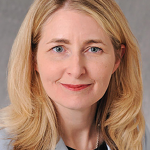
Dr. Shanmugam
Computers also helped with planning concurrent scientific sessions to permit participants to attend sessions that interested them. “There were efforts during our time frame to pay closer attention to what sessions were opposed to each other so we wouldn’t have content-related sessions in time slots opposed to each other that would place people in a dilemma to choose,” says Dr. Mandell, citing, for example, not scheduling lupus basic science talks during the same time slot as talks on clinical lupus or antiphospholipid syndrome, or having educator topics conflicting with clinical talks.
“During this time, the ACR also began to record and stream some sessions, providing initially a limited opportunity to watch some sessions from home after the meeting ended,” he adds.
Despite efforts to streamline the meeting for participants to attend sessions without too many competing interests, running concurrent sessions has not been ideal. “As the meeting grew and we started adding a lot of concurrent sessions, people have gotten annoyed because you can’t attend all the sessions and some interfere with the plenaries,” says Dr. Block. “Many thought the meeting had just gotten too big.”
Navigating a Growing Universe
To help attendees navigate a meeting that today attracts more than 16,000 participants, meeting organizers have implemented various tools. The on-demand tool provides those registered for the meeting free access to recordings of meeting sessions and offers a way for attendees to view sessions they can’t attend live. “Having concurrent sessions is good in terms of choice, but sometimes is frustrating if you want to be in two places at the same time,” says Richard Loeser Jr., MD, the Joseph P. Archie Jr. Eminent Professor of Medicine, Division of Rheumatology, Allergy, and Immunology, and director of the Thurston Arthritis Research Center at the University of North Carolina, Chapel Hill, who was AMPC chair from 2015 through 2017, noting that on demand alleviates some of that frustration.
Another tool was the ACR App that Chester Oddis, MD, professor of medicine and director of the Myositis Center, Division of Rheumatology and Clinical Immunology at the University of Pittsburgh School of Medicine, pushed for during his tenure as AMPC chair from 2012 through 2014. “It may have been more fully developed the year after I completed my time as AMPC chair, but this was a major change that made it convenient for attendees to use on their cell phone and tablet,” he says.
The availability of social media platforms also has pushed the meeting into ever easier ways for participants to access information and engage in sessions they both attend and can’t attend in person. Use of Twitter and chat rooms in real time during the meeting mean aspects can be accessed and navigated without necessarily being physically present. The move toward incorporating social media into the meeting was gradual, according to Dr. Block, who says it started when he was AMPC chair and has grown to become a prominent feature.
Now in its third year, the Twitter Ambassador program involves a group of individuals dedicated to posting on Twitter during the meeting. This helps inform those who aren’t able to attend the meeting or a given session of updates being presented. Twitter also serves as a platform for enriching discussion.
Greater reliance on computerized technology also paved the way for the ability of the meeting planners to pivot to an all-online meeting when the need arose. Social media and online platforms moved center stage in 2020.
Adapting to External Pressures
Over the years, the meeting planners have had to adapt to a number of external pressures, including after 9/11 in 2001 when the U.S. was on alert for further terrorist attacks. Dr. Kay, who was AMPC chair during that year, says, “We had organized plans to deal with any potential acts of terrorism and arranged communication by cell phone,” and cites just how on edge everyone was by a plane crash in Queens that occurred right at the beginning of the meeting that turned out not to be terrorist related.
That year was the only year attendance at the meeting was lower than the previous year, says Dr. Kay.
Prior to that, the meeting occurred every year with growing attendance except for the years from 1943–45 during World War II, during which the meeting was cancelled.
Undoubtedly the greatest external force on the annual meeting in contemporary times has been COVID-19. With an unknown virus rapidly spreading and countries worldwide rushing to adapt to growing restrictions on movement and in-person gatherings, the planning committee in 2020 made a quick pivot to developing a virtual meeting. Victoria Shanmugam, MD, director of The George Washington University Division of Rheumatology in Washington, D.C., and AMPC chair from 2017 to 2020, says the committee had already planned the 2020 meeting just prior to recognition of the gravity of the virus in February/March of 2020, but quickly made the massive paradigm shift to an all-virtual meeting to ensure the meeting went forward.
By all accounts the meeting was a success as evidenced by the positive feedback received and the level of attendance that again drew around 16,000 attendees from 111 countries. “This was an incredible feat for the College,” says Dr. Shanmugam.
Even before pivoting to a virtual format, the planning committee focused on making a number of changes in the 2020 meeting to better represent the demographics of the rheumatology community. “A goal we set in planning the 2020 meeting was to ensure gender equity in our speakers and presenters,” says Dr. Shanmugam. “It was something we built into every component of the planning for the 2020 meeting.”
Another benefit of the virtual format was that it allowed for more opportunities for engagement, she says, citing the ability for more participants in the question-and-answer session via the online poll function.
The virtual format has also expanded access to the meeting that tools like on demand and the meeting app had provided when the meeting was in-person only. For example, Dr. Shanmugam says the traditional meeting app has been replaced by the ACR Convergence site, where the meeting content is all in one place.
Continuance of the virtual meeting in 2021 attests to its success, but a common refrain heard is its big downside—the lack of in-person networking that many rheumatologists look forward to.
“The virtual meeting has its good and bad sides,” says Dr. Loeser, citing, for example, the two-minute summary offered by each poster presenter of their work as a positive to help decide which posters to visit virtually.
“The downside is that if you want to ask questions you use the chat box virtually, which is okay, but not the same as having a discussion in person at the poster,” he adds.
Dr. Loeser would like to see the recorded poster summaries continue going forward, but also have presenters standing at their posters for one-on-one discussions once the meeting moves back to an in-person gathering.
One big perk, according to Dr. Kay, is that the content of the virtual meeting is kept online several months after the meeting ends so attendees can freely view the presentations they missed. “That’s an innovation that provides members [and others] with the advantage of attending the meeting at their convenience and allows for viewing concurrent sessions without missing anything,” he says.
Like Dr. Loeser and all the other AMPC chairs who provided comments for this article, Dr. Kay misses the personal connection the in-person meeting offers. “Many friendships have been made and sustained through the in-person annual meeting,” he says, adding that direct communication with other attendees is lost through the virtual format. “I miss that very much and feel to some extent disconnected,” he says.
Still Evolving
As with any successful organization, the ACR’s annual meeting continues to evolve to meet the times. In 2019, the meeting was rebranded and now goes by the name ACR Convergence. The name reflects the global reach of the meeting that prior to COVID-19 drew about 60% of its attendees from outside North America. The strong international presence underscores the importance of the meeting as the premier meeting in rheumatology across the globe.
To remain the vital meeting it is, the planning committees over time have met the challenges of their day. Under the guidance of the AMPC chairs, the meeting continues to expand to address clinical and research issues pertinent to today’s practice of rheumatology. Describing the changes to the meeting over the years as occurring in “fits and starts,” Dr. Block is optimistic about the younger generation carrying the mantle forward.
“The whole time I was involved with the planning committee and then the educational committee, everyone was worried about engaging the younger generation and getting them involved in volunteer work,” he says. “I’m not convinced that there is a huge attitudinal change in people under 35 or 40 and see lots of members, young and old, getting involved.”
For Dr. Oddis, the last couple of years of virtual meetings may at least alter the way the younger generation participates in the meeting and the College at large. “I’ve always been concerned about the younger generation of rheumatologists; they are clearly different in many ways,” he says. Given the time commitments of traveling to and attending the annual meeting, he wonders if the younger generation will be less likely to commit to that given the value they place on personal time.
All-virtual meetings hold other challenges, he says, among which is funding that has relied heavily on the pharmaceutical industry. “If we no longer have a robust exhibit hall with strong interactions between pharma and ACR members, then funding may be drastically affected, so a future focus must be on funding as well as the innovative engagement of our members from an academic perspective,” he says.
What will not change is the continual hard work and institutional knowledge of the ACR planning committee staff, without which the meeting would not occur.
Mary Beth Nierengarten is a freelance medical journalist based in Minneapolis.

